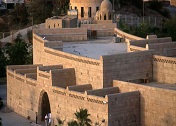Cairo - The Egyptian Museum
The greatest collection of Egyptian antiquities is, without doubt, that of the Egyptian Museum in Cairo. It is a place of true discovery and, even after many visits, I continue to make new and delightful discoveries every time I venture into its many galleries.
To be sure, the museum can be daunting in the sheer numbers of its antiquities on show, but there is an order within its layout and it is a dream come true for anyone wanting to study Egyptian antiquities.
However, the negative side is that the environmental and display conditions leave a great deal to be desired. Labels on some exhibits date from early in the century and many items have no labels at all. Guidebooks are available at the museum, although they are limited to some of the major items.
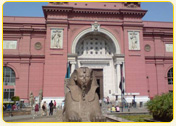
The Coptic Museum
The Coptic Museum in Cairo is a life-like record of one of Egypt’s periods all fraught with various antiques and monuments reflecting the different civilizations that graced the land of Egypt starting by the Ancient Egyptian civilization, passing by the Greek, the Roman, the Coptic, and lastly the Islamic.
The Coptic Museum lies behind the walls of the famous Roman Fortress of Babylon in the ancient district of Cairo (Misr Al-Qadima).
The area surrounding the museum abounds in lively monuments of open museums that depict with the Coptic Museum the history of the Coptic Period in Egypt.
Six paramount, ancient, Coptic Churches share ground with the Coptic Museum. They date back somewhere between 5th and 8th century AD. The place holds the church of Abu Serga, the most ancient in Egypt. It was raised above the cave which the Holy Family sought refuge into as they fled from Herodus’s oppression to Egypt.
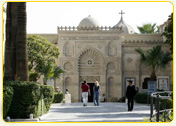
Cairo - The Islamic Museum
When the Ministry of Culture decided to add to its series of specialised museums one for of Islamic ceramics, it chose the palace of Prince Ibrahim in Zamalek built in 1343 H. (1924 A.D.).
Undoubtedly, this choice was inspired by the palace’s impressive Islamic architecture and dercoration, as well as its location in a quiet and fashionable district in the heart of the city.
This splendid palace, a masterpiece in its own right, provides an ideal setting for the precious works of Muslim ceramists throughout Islamic history. The Museum of Islamic Ceramics, inaugurated late 1998, is an integral part of the renovated and refurbished Gezira Art Centre affiliated to the National Centre for Arts, Ministry of Culture.
The first of its kind in the Middle East, it houses a rare collection of ceramics acquired from different Islamic countries that represent various techniques of decoration applied in the Islamic world from Morocco in the west to Iran in the east. The collection comprises 315 pieces, of which 116 are from Egypt representing popular styles from the different Islamic eras, Umayyad, Fatimid, Ayyubid and Mamluk, 118 pieces in Turkish style ( Iznik and Kutahia ), 25 pieces in Syrian style (Al-Raqqa), 48 pieces in Iranian style, 2 pieces in Andalusian style, 2 pieces in Iraqi style and one piece in Moroccan style. The ceramics include vessels, jars, tiles, mugs, jugs, bowls, plates, pitchers, vases, lanterns, cups, the oldest dating back to second century Hijra and the most recent dating back to twelfth century Hijra.
The pieces, carefully selected from the acquisitions of the Gezira Museum (150 pieces) Islamic Art Museum (159 pieces) and 6 pieces from the very palace that houses the Museum of Islamic Ceramics, are displayed on two floors in a total area of 420 square meters.
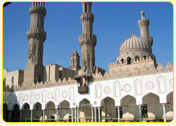
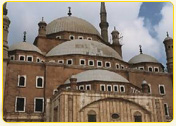
Luxour - Museum
The small museum at Luxor is a beautiful building for the display of beautiful sculpture. The pieces are from the Middle and New Kingdoms. The displays are quite dramatic, but the lighting is not very bright, making things difficult for the photographer. As in almost all such places, flash is prohibited.
Akhenaten was apparently deformed, with an extremely long neck and long narrow face, somewhat hunchbacked. The realistic representations he seems to have preferred caused some artists to depict everyone as looking like him. The famous head of his wife, Nefertiti, which was taken to Germany, shows that a good artist did not make this error.
I am grateful to Katherine Griffis-Greenberg and Joanna Aksamit for correcting some of the errors which I made in my initial composition of this page. Thanks also to Dr. Joern Osselman. who has suggested further changes, which I have made.
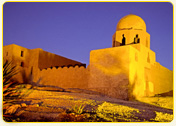
Aswan - Nubia Museum
harbors the history of the “Land of Gold” as the word Nubia in the Hieroglyphic, language of ancient Egypt in which pictorial symbols are used to represent meaning and sounds, means the “Land of Gold”…Hence, this land, over times, was abounding in monumental treasures.
The Nubia Museum, in Aswan, as a matter of fact, is deemed to be one of the most important Egyptian museums. A number of factors have combined together, yielding the magnificence of such museum, as it is the only unique open museum of its kind.
Preparing this museum lasted for ten years, all dedicated for hard work to come up with such lovely museum. Let alone, it stands as a wonderful model of international cultural cooperation representing in United Nations Educational, Scientific, and Cultural Organization (UNESCO).
In April 6th, 1959, the Egyptian government appealed to the United Nations Educational, Cultural, and
